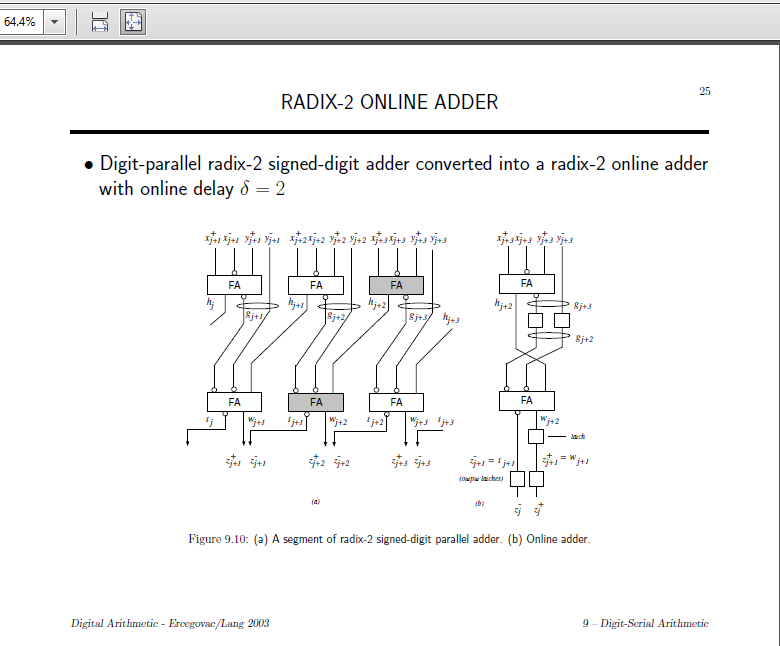In carry-save/borrow save arithmetics, each binary position is represented as two bits. Numbers can have several possible representations.
+25 = P=11001 / N=00000
-10 = P=00000 / N=01010
The result is simply :
+25-10 : P= 11001 / N=01010
P=1, N=1 combinations can be simplified to P=0, N=0.
So :
+25-10 : P= 10001 / N=00010
You can convert to a traditional two's complement representation by doing the actual subtraction : 10001 - 00010 = 1111 = 15
For a simple substraction, it does not make any sense.
The whole purpose of this mess is that you can do iterative additions or subtraction and you only have to perform one level of binary operations on each step ( a few XORs or muxes per bit), without propagating the carry.
For example, divisions (particularly SRT divisions) can be done with many successive additions or subtractions. Using carry-save/borrow-save representations allows to reduce the cycle time, or to calculate more bits per cycle and, as there is no carry propagation, it does not depends on the operand size (for example the same cycle frequency is adapted for both single and double precision floating point).
Edit
Look for "borrow-save adder" for actual implementations . For example : http://users-tima.imag.fr/cis/guyot/Cours/Oparithm/english/Additi.htm
Edit
FA blocks are "full adders"
Take 3 inputs, A,B and C, each weighting 0 or 1.
The result is between 00 and 11.
A full adder is :
Carry = (A and B) or (B and C) or (A and C)
Sum = A xor B xor C
The bubbles around the adders are obviously inverters, 'NOT' gates
The 'Online' version on the right diagram processes bits serially instead of in parallel. I have the impression that the least significant bit should be provided first. Squares are memory/flipflops, the propagation time is therefore 3 clocks.
The adder
This diagram describes an adder taking two BS vectors (X+/X-) and (Y+/Y-) and generating one BS result (Z+/Z-). It can also be used to calculate the sum of two differences.
The problem I see is that you need the absolute value to calculate the 'sum of absolute differences'. I don't know how to convert to the absolute without doing a (carry propagating) comparison.


